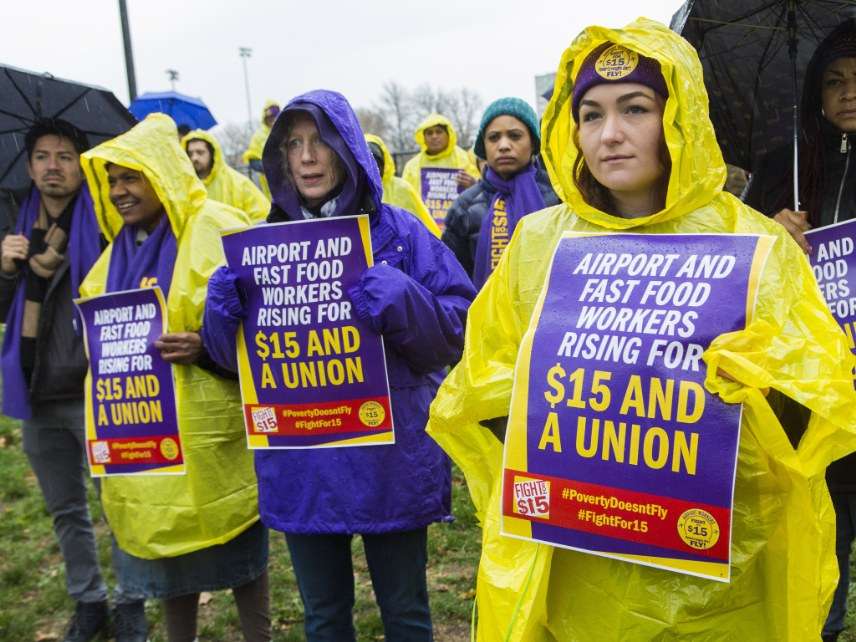Report: California's $15 Minimum Wage Will Destroy 400,000 Jobs
A loss of opportunities equal to about four percent of the workforce.

California's massive state-wide jump to a $15 minimum wage could conservatively cost around 400,000 potential jobs, according to a new Employment Policy Institute study.
"California Dreamin' of Higher Wages," strives to evaluate what the state's jump to a $15 minimum wage will mean when it fully kicks in in 2022 by attempting to contextualize it with the empirical effects of previous minimum wage increases in the state going back to 1990.
The results are pretty dire. They believe that by the time the minimum wage fully kicks in the state will have lost 400,000 jobs as a consequence. These job losses will not be evenly distributed throughout the state's workforce. They will hit food service, retail, and agriculture jobs the hardest. Overall, this a four percent loss of jobs out of workforce estimated at around 10 million.
David MacPherson of Trinity University and William Even of Miami University have attempted to model the likely impacts in a study published by the Institute, a nonprofit research organization that's focused on the impact of labor policies on entry-level jobs.
The Employment Policy Institute regularly analyzes and warns about the economic consequences of big shifts in the minimum wage (and is not to be confused with the Economic Policy Institute, which supports a $15 minimum wage).
MacPherson and Even call their estimate "conservative" because they left out several counties with gaps in their employment data to make sure the analysis was fair and empirical. They've also removed the effects on manufacturing jobs in Los Angeles County from some of their calculation models because it had such a significant—negative— distorting effect on the overall study. If you're working in manufacturing in the L.A. area, consider yourselves warned.
The report acknowledges it covers only about three-quarters of the state's work force. Some of the counties excluded from the study, like Inyo County (deep inside the state with a total population of less than 20,000) have heavily rural populations that are more likely to see more negative impacts from the minimum wage increase. The report notes that the percentage of workers within an industry who make the minimum wage or close to it varies widely from county to county in California. Minimum wage increases in some counties will have a much bigger impact on employment than on other counties even in the same field, and some employers may be better situated to adjust than others.
When California Gov. Jerry Brown pulled the trigger on the $15 minimum wage, many folks (myself included) warned the rural inland parts of the state will pay a heavy price for politicians catering to unions in the urban coastal centers. That's what those wide county-to-county variations fundamentally mean.
Read the report here. The mathematics may be a little hard to follow, but the conclusions are easy to grasp and align with other studies that warn that jacking up the minimum wage reduces the number of entry-level jobs available and doesn't actually reduce poverty.


Show Comments (23)